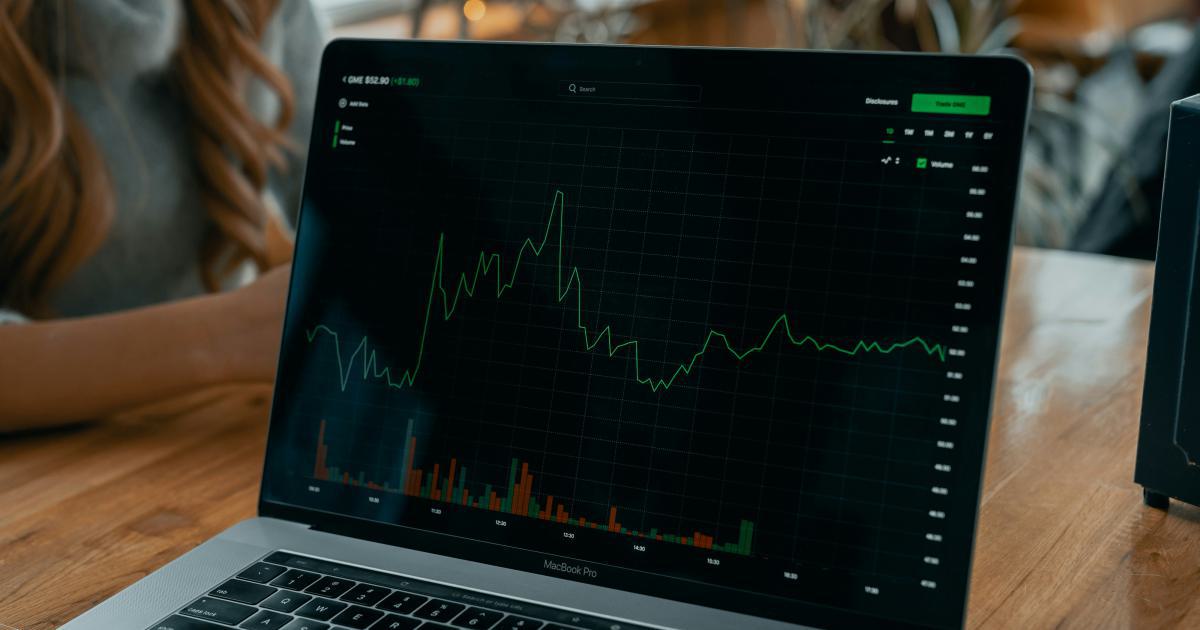How to Use Trading Trend Analysis Tools Easily

The world of trading evolves rapidly, and nowadays, effective decision-making relies on insights delivered by robust analysis tools. In this article, we explore how to use trading trend analysis tools easily, offering comprehensive guidance from basic concepts to advanced techniques. We begin with an introduction to the significance of these tools and then dive into methodologies, challenges, and practical applications. Whether you’re a novice trader or a seasoned investor, this guide is designed to help you harness the power of trading trend analysis tools for making better financial decisions.
Introduction
In modern finance, keeping up with market movements is not just an advantage—it is a necessity. Trading trend analysis tools help aspiring traders decode the complex patterns within market data, allowing for proactive decision-making. Tools such as moving averages, oscillators, and momentum indicators are now readily available in various trading platforms. By understanding the utilization of these tools, you can enhance your portfolio’s performance and minimize risk.
In this article, we cover:
- The background and evolution of trading trend analysis tools.
- Detailed descriptions of key features and functionalities.
- A step-by-step guide to using these tools for real-world scenarios.
- Challenges traders face and practical ways to overcome them.
- Future trends and potential improvements in the field of trading analytics.
Our discussion is designed to be accessible yet detailed—ensuring that both beginners and experienced traders find valuable insights. Let’s embark on a journey that transforms those intimidating data charts into actionable trading strategies.
“Trading trend analysis is not just about reading charts—it’s about understanding the story behind every data point.”
Background
Trading trend analysis tools emerged as the markets grew more complex. With the proliferation of digital trading platforms, manual calculations gave way to automated systems that process vast amounts of data in real time. These tools incorporate several technical analysis methods and even integrate aspects of machine learning to forecast trends.
Evolution of Trading Trend Analysis Tools
Historically, trading was driven by intuition and manual record-keeping. With advancements in computer science and mathematics, traders began using statistical models to predict market behavior. Over time, a wide array of technical indicators, such as the Relative Strength Index (RSI) and Bollinger Bands, has become standard in many trading toolkits. The melding of these technical tools with advanced analytics has democratized trading information, enabling traders of all levels to access sophisticated market insights.
Key milestones in this evolution include:
- Adoption of computerized charting in the late 20th century.
- Integration of real-time data feeds in major trading platforms.
- The use of artificial intelligence to identify complex market patterns.
- Expansion of mobile trading apps that bring advanced analysis tools to the everyday trader.
Fundamental Concepts
Before using any trading trend analysis tools, it is essential to understand core concepts such as trend identification, support and resistance levels, and market momentum. These principles serve as the foundation for all technical analysis. The following subsections offer a quick overview.
Trend Identification
Identifying the direction of a market trend—whether upward, downward, or sideways—is crucial. Trend analysis involves scrutinizing historical price movements and volume data to forecast future directions. Tools such as moving averages and trend lines assist in this identification.
Support and Resistance
In technical analysis, support and resistance levels indicate points on a chart where the price historically reverses or stalls. Recognizing these levels can signal potential trading opportunities.
Momentum
Indicators like the RSI or Moving Average Convergence Divergence (MACD) measure the momentum behind market moves. This helps distinguish strong trends from fleeting price fluctuations.

Key Features and Methodologies
A trader’s journey using trading trend analysis tools requires a solid understanding of various features and methodologies. This section covers the most critical aspects you need to know to get started.
1. Understanding the Interface and Basic Operations
Modern trading platforms incorporate intuitive interfaces, but clarity in navigation is necessary to leverage their full potential. Areas like the charting window, time frames, and indicator panels are standard across most platforms. Here’s how to begin:
- Navigation: Familiarize yourself with the layout. Look for toolbars that house drawing tools, indicator menus, and settings.
- Customization: Most platforms allow traders to personalize charts. You can adjust the color, style, and resolution based on your preferences.
2. Types of Trading Trend Analysis Tools
There is a diverse range of tools available, each catering to different aspects of market analysis. Below is an overview of some common types.
a. Moving Averages
Moving averages help smooth out price data to create a single flowing line, making it easier to identify the direction of the trend. The two most common types are the simple moving average (SMA) and the exponential moving average (EMA).
b. Oscillators
Oscillators such as the RSI, MACD, and Stochastic Oscillator are designed to signal overbought or oversold conditions. These are particularly useful in market conditions where price movements are less clear-cut.
c. Volume Indicators
Volume indicators serve as a confirmation mechanism to validate trends. High traded volumes during a new price move often indicate a strong trend, while low volumes may suggest caution.
d. Fibonacci Retracement Tools
These tools assist in identifying potential reversal levels using key Fibonacci ratios, helping traders determine strategic entry and exit points.
e. Pattern Recognition Tools
Some advanced trading platforms incorporate algorithms that identify recurrent price patterns like head and shoulders, double tops, or flags. Recognizing these patterns in real time provides traders with a competitive edge.
3. Integration with Other Analytical Tools and Data Sources
The true strength of trading trend analysis tools lies in their integration capabilities. Many platforms allow you to combine traditional technical analysis with fundamental data, news feeds, and even sentiment analysis.
- Data Feeds: Real-time data is key to reacting to market changes. Some tools integrate live data from reputable sources to ensure accuracy.
- Algorithmic Trading: Leveraging programming languages like
PythonorRallows traders to automate strategies. Many platforms offer APIs for custom algorithmic strategies.
4. Building a Trading Strategy
Designing a coherent trading strategy involves several steps:
Identify Your Objective: Are you short-term, long-term, or swing trading?
Risk Management: Decide beforehand on stop-loss and take-profit levels.
Test Your Strategy: Use simulation features or back-testing tools to evaluate the effectiveness of your strategy before applying it in real markets.
A Table of Common Indicators and Their Uses
| Indicator Name | Primary Use | Common Time Frames |
|---|---|---|
| Moving Average | Trend smoothing | 15 min, 1 hour, daily |
| RSI | Identifying overbought/oversold conditions | 5 min, 15 min, daily |
| MACD | Momentum and trend changes | 15 min, hourly, daily |
| Bollinger Bands | Volatility identification | 15 min, hourly, daily |
| Fibonacci | Reversal levels | Daily, weekly |
Utilizing these tools intelligently can guide you to make informed, profitable decisions.
5. Interpreting Trends and Forming Conclusions
The final, and perhaps most critical, step is to interpret your findings. Trading trend analysis tools generate a variety of signals, and distinguishing between noise and meaningful trends is an art. Here are some tips:
- Multiple Confirmations: Always cross-check signals from multiple indicators before acting.
- Historical Context: Use historical data to gauge the reliability of trend signals.
- Stay Updated: Markets change, and previous patterns may not hold forever.

Practical Applications
Understanding theoretical concepts is essential, but practical application is where these tools truly shine. Here, we explore several real-world scenarios where trading trend analysis tools have made a significant impact.
1. Day Trading Versus Long-term Investing
Different trading styles require distinct analytical approaches. Day traders often rely on short-term oscillators and real-time data to capitalize on minute-to-minute fluctuations. In contrast, long-term investors depend on moving averages and broader trend analysis to identify sustained market movements.
Day Trading Strategies
Day trading requires quick decision-making. Traders use tools that provide immediate insights into market conditions. For example:
- Scalping Techniques: Involves making numerous small profits by quickly entering and exiting trades.
- Momentum Trading: Relies on high-frequency trading strategies that capitalize on momentum indicators.
"Quick and accurate analysis using these tools is the cornerstone of successful day trading."
Long-term Investing Strategies
For those who invest for the long haul, identifying macro trends becomes more critical. Trading trend analysis tools help pinpoint these trends, offering insights into market cycles, seasonal trends, and economic shifts.
2. Case Study: Utilizing Trading Trend Analysis in Volatile Markets
Consider a trader navigating a volatile market such as cryptocurrencies. When Bitcoin and other altcoins experience rapid shifts in price, a trader might use a combination of RSI and Fibonacci retracement levels to gauge entry and exit points. By using these well-established indicators, the trader can manage risk effectively, even when volatility is high.
Key Elements of the Case Study:
- Data Integration: Real-time price feeds combined with historical trend analysis.
- Sequential Signal Confirmation: Using RSI followed by MACD to confirm trends.
- Risk Management: Deploying stop-loss orders inspired by technical levels identified through the analysis tools.
3. The Role of Automation
For advanced traders, automation can be a game changer. Many trading platforms offer algorithmic functions that allow traders to encode their strategies directly. Combining technical indicators with automated trading ensures that trades are executed at optimal moments.
- Example: A trader writes a simple
Pythonscript that monitors the MACD crossover and places an order automatically when the conditions are met. This integration saves time and reduces emotional decision-making.
4. Enhancing Analysis with External Data
Apart from technical signals, external factors such as economic reports, geopolitical events, and market sentiment can influence trends. Integrating news feeds, earnings reports, and social media sentiment analysis enriches the decision-making process. Many platforms allow traders to overlay such data onto their charts, providing a more holistic view of the market.

Challenges and Controversies
Even the best trading trend analysis tools have limitations. Understanding these challenges is crucial for mitigating risks.
1. Over-Reliance on Technical Indicators
Relying solely on technical indicators without considering broader market contexts can lead to misguided decisions. Indicators are not infallible; they merely provide a statistical perspective on market behavior. For instance, during unexpected events like geopolitical crises or sudden economic shifts, technical indicators might fail to capture the full picture.
2. Data Overload and Analysis Paralysis
Modern trading platforms generate vast amounts of data. The sheer volume can lead to analysis paralysis where traders become overwhelmed by conflicting signals. Balancing data quantity with decision quality is an art that comes with experience and continual learning.
3. Misinterpretation and Subjectivity
Even when using sophisticated tools, signal interpretation can be subjective. Two traders may look at the same chart and come to different conclusions based on their experience, risk tolerance, and investment horizon. This subjectivity makes it essential to develop a personal coding system of heuristics based on continuous practice and learning.
4. Technological Limitations
No system is foolproof. Algorithms can experience glitches, data feeds can become delayed, and extreme market conditions can lead to system failures. These technical hiccups underscore the importance of having contingency plans and understanding the underlying mechanics of each trading tool.
5. High Learning Curve
For newcomers, getting up to speed with terms like back-testing, algorithmic trading, or even simple indicators such as the RSI can be daunting. The steep learning curve may deter some from fully utilizing these tools without additional education or professional guidance.
“Even the best trading trend analysis tools require informed judgment to be truly effective.”
Practical Implications and Real-World Applications
With a foundational and critical understanding of these tools, let’s discuss their practical implications in various trading environments.
1. Portfolio Management and Risk Mitigation
Effective portfolio management often requires regular rebalancing and adjustment based on underlying market trends. Trading trend analysis tools play a pivotal role in:
- Identifying Market Shifts: Rapidly adjusting stop-loss orders or taking profits in volatile markets.
- Diversification Strategies: Pinpointing non-correlated assets that can protect the overall portfolio from market-wide swings.
- Performance Measurement: Evaluating historical performance to fine-tune current trading strategies.
Traders use dashboards that compile multiple indicators into a coherent risk profile. This helps them modify positions based on real-time data analysis.
2. Enhancing Trading Efficiency
By automating repetitive tasks and integrating analytical modules, traders can significantly improve their operational efficiency. Tasks such as:
- Regular portfolio review,
- Monitoring multiple asset classes simultaneously,
- Evaluating entry and exit signals,
For instance, with just a few lines of code, a trader might construct a dashboard that identifies potential turnaround points based on moving average crossovers and RSI levels.
3. Making Data-Driven Decisions
Real-time decision-making, driven by the combination of technical and contextual data, minimizes emotional bias. A structured approach using trading trend analysis tools can:
- Prevent impulsive decisions in highly volatile markets.
- Validate investment hypotheses with historical trends.
- Provide a statistical basis for risk management strategies.
4. Educational Impact
For new traders, learning to work with these tools is akin to acquiring a new language—the language of the markets. Education platforms that integrate simulated trading environments allow aspiring traders to practice in risk-free scenarios while gradually understanding the nuances of technical analysis.
Table: Comparative Analysis of Trading Strategies
| Strategy Type | Time Horizon | Primary Tools Used | Risk Level |
|---|---|---|---|
| Day Trading | Minutes to hours | Oscillators, Volume Indicators | High |
| Swing Trading | Days to weeks | Moving averages, Fibonacci Tools | Moderate |
| Long-term Investing | Months to years | Trend analysis, Fundamental Data | Low to Medium |
A balanced portfolio strategy often incorporates elements of multiple trading strategies, effectively mitigating risk while exploring various market opportunities.
Future Trends and Developments
The field of trading trend analysis is ever-evolving. Emerging technologies promise to enhance the quality and speed of market analysis even further.
1. Artificial Intelligence and Machine Learning
One of the most exciting frontiers is the integration of AI and machine learning. Advanced algorithms are now capable of analyzing vast datasets to predict market trends with higher accuracy. This includes:
- Predictive Analytics: Using historical data patterns to forecast future price movements.
- Sentiment Analysis: Extracting emotions and opinions from financial news and social media feeds to gauge market sentiment.
- Adaptive Learning Models: Models that continuously learn and adapt by processing new data in real time.
2. Blockchain and Data Integrity
Blockchain technology offers the promise of unalterable and real-time data, enhancing the reliability of trading trend analysis. By reducing discrepancies in data reporting, blockchain ensures that all technical indicators are based on accurate and timely information.
3. Increased Customization and User Control
Trading platforms are increasingly offering customizable interfaces that allow traders to build personal dashboards and integrate third-party analytical tools with ease. This trend not only enhances user engagement but also provides a more tailored trading experience.
4. Regulatory Changes and Market Transparency
As regulators around the world continue to scrutinize trading practices, there is a trend towards increasing market transparency. Enhanced reporting standards and better data accessibility mean that trading trend analysis tools must evolve to meet new compliance requirements, ultimately benefiting the trader with more reliable insights.
“The future of trading is a confluence of technology, data, and human ingenuity—ensuring smarter, more adaptive approaches to market analysis.”
Conclusion
In summary, the effective use of trading trend analysis tools can transform how you approach the market. By understanding the evolution and functionality of these tools, you can:
- Identify market trends and validate signals.
- Automate repetitive trading tasks while reducing emotional decision-making.
- Develop solid risk management strategies through data-driven insights.
- Prepare for the future with a robust, technologically advanced trading approach.
Each step of the journey—from mastering the user interface to integrating advanced algorithms—builds a foundation for effective trading. As technologies evolve and regulatory landscapes shift, the underlying principles remain constant: a well-informed trader is always best positioned to succeed.
Key Takeaways
- Trading trend analysis tools offer critical insights for both short-term and long-term market strategies.
- Effective integration of various data sources and technical indicators is crucial for successful trading.
- Continual learning, adaptation, and automation are pillars of modern trading strategies.
- Challenges such as technological glitches, data overload, and subjective interpretation must be managed through proper risk control and systematic testing.
"In the dynamic world of trading, staying ahead means continually evolving your strategies with the best available tools."
Further Reading
- Investopedia: Technical Analysis
- BabyPips: A Guide to Forex Trading
- Journal of Trading
- CFA Institute Publications
Thought-Provoking Questions
- How can traders balance the use of automated trading tools with human intuition?
- What are the risks of overreliance on technical indicators in highly volatile markets?
- In what ways can emerging AI technologies further refine the accuracy of trading trend analysis tools?
- How might regulatory developments influence the design and usage of future trading analysis platforms?
By reflecting on these questions and considering the insights provided in this article, you can better position yourself for success in an ever-changing trading environment.
Additional Resources and Next Steps
As you continue to explore trading trend analysis tools, consider experimenting with demo accounts and simulation platforms. These environments offer a risk-free opportunity to apply what you’ve learned and refine your trading strategy. Furthermore, engaging in online trading communities, attending webinars, and reading up-to-date market research can provide invaluable insights.
Remember, mastery of trading trend analysis tools does not happen overnight. Continuous practice, coupled with ongoing education, will solidify your understanding and help you adapt to market shifts effectively.
For professionals looking to delve even deeper, integrating advanced statistical theories, machine learning models, and exploratory data analytics into your trading strategy could be the key to unlocking new levels of performance in your investments.
Final Reflections
In the world of finance, where every millisecond counts, the tools you use can mean the difference between success and failure. Trading trend analysis tools are an essential component of the modern trader's toolkit. They provide a structured way to approach market analysis, enabling traders to make decisions that are both informed and timely.
Embrace the technology, yet remember that the most powerful trading insights come from a blend of robust data analysis and a deep understanding of market psychology. As you incorporate these tools into your trading strategy, be prepared to adjust and fine-tune your approach continuously. The journey of learning and adaptation is endless, and the most successful traders are those who never stop evolving.
By understanding the mechanics, leveraging varied analytical methods, and continually testing your strategies, you can transform raw market data into actionable intelligence that drives performance. With careful planning and disciplined execution, trading trend analysis tools will empower you to navigate the complexities of today’s financial markets with greater confidence and precision.
Happy trading!
Unmatched Trading Power with Binance
Are you ready to take your trading game to new heights? Binance offers a cutting-edge platform for seamless cryptocurrency transactions.
With lightning-fast execution, top-tier security, and a vast selection of coins, you'll have all the tools you need to maximize your profits. Join now and experience the future of trading.
Keval Desai
61 posts written





